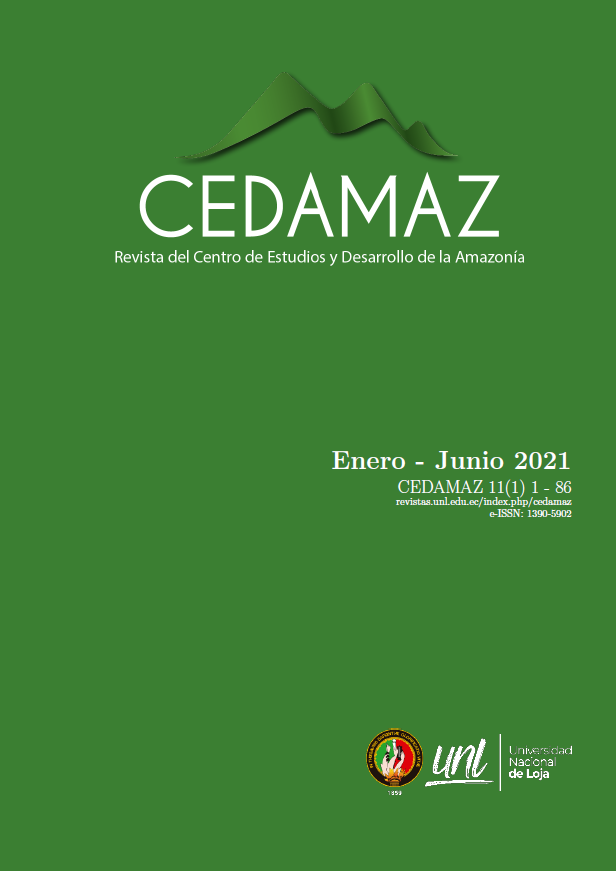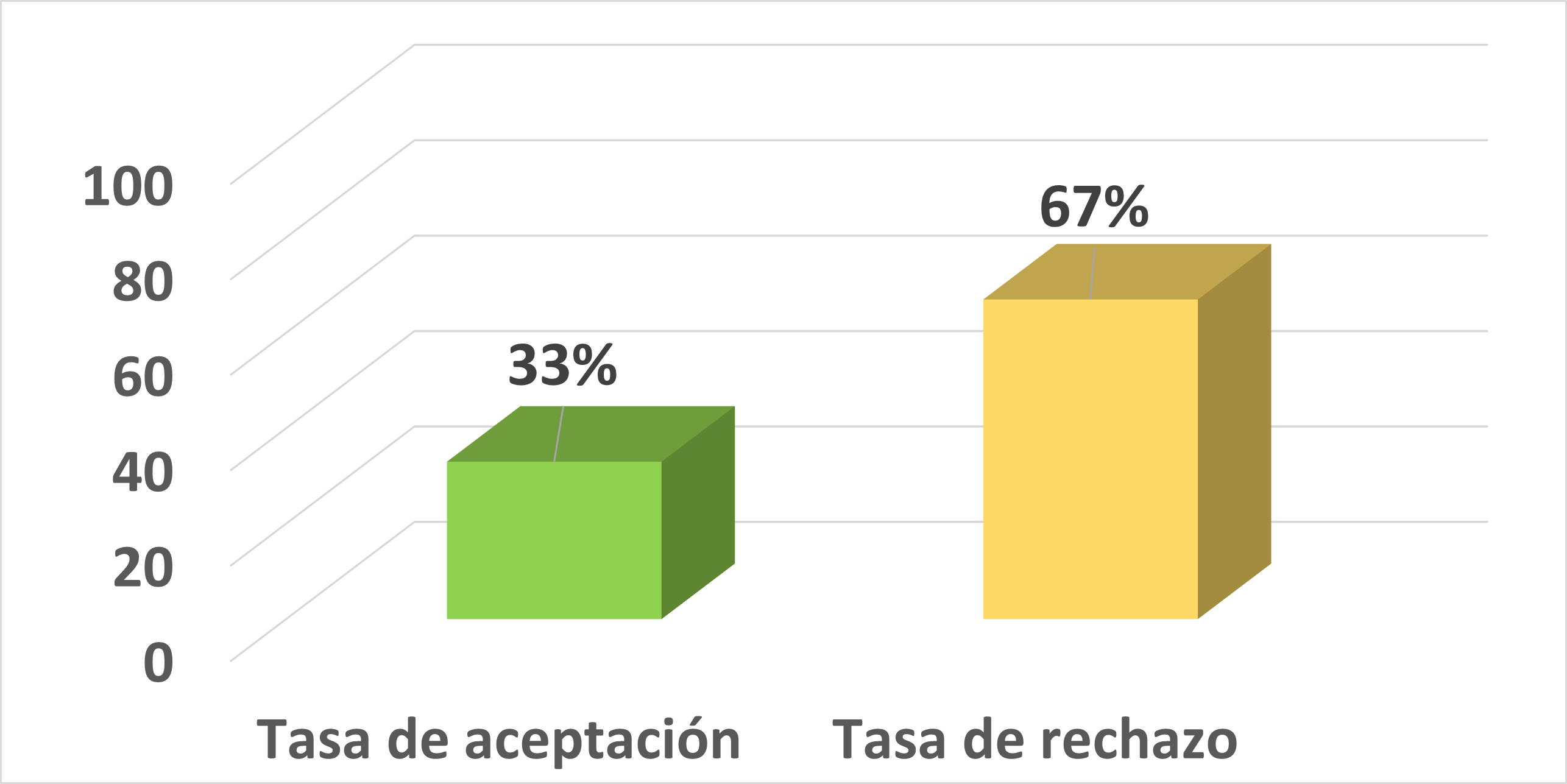Use of chemical pesticides on tomato (Solanum lycopersicum L.) under greenhouse and field conditions in Loja, Ecuador
Keywords:
Modes of action, Muilti site action, Withdrawal period, Re-entry period, PesticidesAbstract
The present study was aimed to identify, characterize and establish differences between the chemical pesticides used in the productive management of tomato, both in greenhouses and in open fields. The research was done with interviews and direct observation in the productive areas, and carried out evidences of a production based on agrochemicals, executed entirely in an empirical way, ignoring basic aspects such as: recognition of the type of chemical to be used, compliance with doses, frequencies, mixtures and use of protective equipment, among others. The study determined 16 types of insecticides in greenhouses and 8 in open fields, in which the most frequently found modes of action were those that act on the nervous and muscular systems and on the regulation of insect growth. On the other way, 29 types of fungicides were found in greenhouses and 13 in open fields, and the most frequent mode of action was that having multi-site action on the metabolic processes of the fungus. During application, these chemicals were mixed and applied without technical criteria, which may cause overdosage or adverse chemical reactions. In addition, the re-entry periods were not respected and there was no clarity about the withdrawal periods of the chemicals used. We concluded that it is essential to provide technical assistance in the follow-up and control and to issue more severe regulations for the use and management of pesticides, maintaining a permanent monitoring of the use of these chemicals in the province’s agricultural crops.References
Agrocalidad, Agencia de Regulación y Control Fito y Zoosanitario. 2020. reporte de productos de insumos agrícolas del Ministerio de Agricultura y Ganadería y Agrocalidad actualizada el dos de julio de 2020. Dirección de Registro de Insumos Agrícolas. Quito, Ecuador. Recuperado en: https://www.agrocalidad.gob.ec/366-2/
Agropinos. 2019. Cultivos de invernaderos, cada vez más exitosos. Colombia. Recuperado en: https://www.agropinos.com/beneficios-de-los-invernaderos Consultado el: 4 de mayo de 2021.
Arévalo W. 2010. Evaluación del manejo poscosecha/comercialización en productos perecibles (tomate, pimiento y pepino) en las principales zonas de producción en la provincia de Loja. Tesis Ingeniero Agrícola. Loja, Ecuador: Facultad Agropecuaria y de Recursos Naturales Renovables, Universidad Nacional de Loja. 88p.
Barbieri F. 2010. Plaguicidas organofosforados en los cultivos de tomate. Centro Boliviano de Estudios Multidisciplinarios (Cebem). La Paz, Bolivia.
Belfroid, A., Drunen., van, M., Beek, M., Schrap, S., Gestel, C. v., Hattum, B. v. (1998). Relative risks of transformation products of pesticides for aquatic ecosystems. Science of The Total Environment, 222(3), 167-183.
Castillo Ramiro., 2012. Seguridad Alimentaria en el manejo de la calidad e inocuidad de productos perecibles (tomate, Lycopersicon esculentum, pepino, Cucumis sativus y pimiento, Capsicum annuum). Estudios universitarios.
Castillo V. 2018. Valoración fitosanitaria en la producción de tomate (Lycopersicum Sculentum) en la periferia de la ciudad de Loja. Tesis Maestría. Cuenca, Ecuador. Departamento de Posgrados. Universidad del Azuay. 19-32p.
Edifarm. (2020). Vademécum Agrícola. Décimo quinta edición. Quito, Ecuador.
Firas, M.F.H. 2015. Awareness of pesticide residues in foodstuff among people in Taif region, Kingdom of Saudi Arabia, Sky Journal of Food Science, 4: 15-18.
FRAC, 2019. Clasificación de fungicidas y bactericidas según el modo de acción. España. Recuperado en: https://www.syngenta.es/sites/g/files/zhg516/f/2019/04/clasificacion-fungicidas-bactericidas-segun-modoaccion. pdf Consultado 23 enero 2021.
Garaj V., Zeljezic D. (2001). Cytogenetic monitoring of Croatian population occupationally exposed to a complex mixture of pesticides. Toxicology, 165(2- 3): 153-162.
García J. (2019). Formulaciones de plaguicidas: importancia, tipos y perspectivas futuras. Revista Tecnología En Marcha, 13(2): 44–60.
García R., Soria L., Jiménez M., Menéndez M., Repetto, M., et al. (1998). Detaths from pesticide poisoning in Spain from 1991 to 1996. Veterinary and Human Toxicology, 40(3): 166-168.
IICA, Instituto Interamericano de Cooperación para la Agricultura, 2012. Situación de la seguridad alimentaria en las Américas. San José, Costa Rica: Imprenta del IICA, Sede Central. 44p.
IRAC, 2020. Clasificación del modo de acción de insecticidas y acaricidas. España. Recuperado en: file:///C:/Users/Asus/Downloads/MoAClassification_v9.4_3March20.pdf Consultado el: 22 enero 2021.
Lindao V., Jave J., Retuerto M., Erazo N., Echeverria M. (2015) Impacto en los niveles de colinesterasa en agricultores de tomate (Solanum lycopersicum L) en la localidad de San Luis, Chimborazo por efecto del uso de insecticidas organofosforados y carbamatos. 20 (40): 114-119.
Matthews, G., 2006. Pesticides: Health, Safety and the environment. Primera edición. Reino Unido: Oxford: Blackwell Publishing.
Navarro I., Periago J. 2016. El tomate, ¿alimento saludable y/o funcional? Revista Española de Nutrición Humana y Dietética, 20 (4): 323-335.
Petter, F., Segate, D., Pacheco, L., Almeida, F., & Alcântara, N. F. 2012, junio. Incompatibilidad física de mezclas entre herbicidas e insecticidas. Planta DaninhaScielo, 30(2):449-57.
Wolansky J. 2011 Plaguicidas y salud humana. Departamento de Química Biológica, Facultad de Ciencias Exactas y Naturales, UBA, 21(122).
Published
How to Cite
Issue
Section
License

This work is licensed under a Creative Commons Attribution-NonCommercial-NoDerivatives 4.0 International License.
Those authors who have publications with this journal, accept the following terms:
- After the scientific article is accepted for publication, the author agrees to transfer the rights of the first publication to the CEDAMAZ Journal, but the authors retain the copyright. The total or partial reproduction of the published texts is allowed as long as it is not for profit. When the total or partial reproduction of scientific articles accepted and published in the CEDAMAZ Journal is carried out, the complete source and the electronic address of the publication must be cited.
- Scientific articles accepted and published in the CEDAMAZ journal may be deposited by the authors in their entirety in any repository without commercial purposes.
- Authors should not distribute accepted scientific articles that have not yet been officially published by CEDAMAZ. Failure to comply with this rule will result in the rejection of the scientific article.
- The publication of your work will be simultaneously subject to the Attribution-NonCommercial-NoDerivatives 4.0 International (CC BY-NC-ND 4.0)









